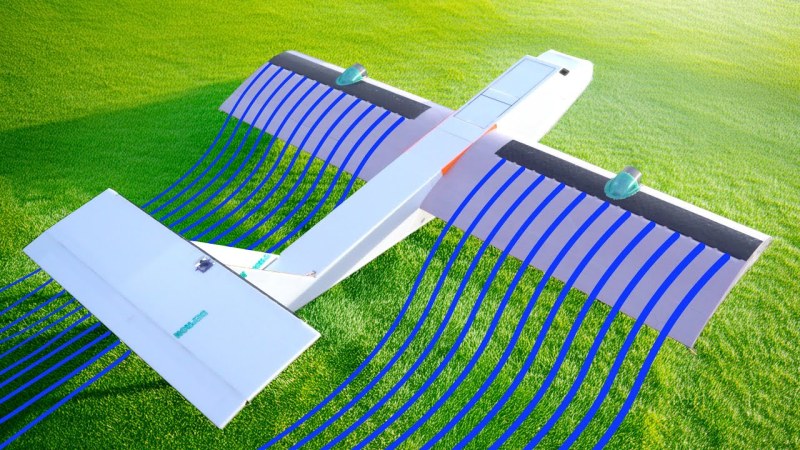This Plane Flies Slow Because Its Wings Really Blow
The key to Short Takeoff and Landing (STOL) operations is the ability to fly slow– really slow. That’s how you get up fast without a long takeoff roll to build up speed. Usually, this involves layers of large flaps and/or leading edge slots, but [rctestflight] on YouTube decided he wanted to take a more active approach with a fully blown wing.
The airplane in question is R/C, of course, and good thing: these wings would be a safety nightmare for a manned aircraft. With a blown wing, air is blown out of a slot on the top end of the wing, producing a high-speed, high-pressure zone that keeps the wing flying when it would otherwise be completely stalled out. As long as everything works, that’s great! If an engine fails, well, suddenly you aren’t flying anymore — and you’re going too slow to glide. It ends badly.
[rctestflight] doesn’t have to worry about that, though, because this foamboard and pink styro R/C aircraft carries nothing that can’t survive a crash. (A couple of electric ducted fans (EDCs), an Ardupilot, a radio, and a battery are all pretty shock-resistant.) The EDCs sit midway down the chord of the wings, and blow air into a plenum carved into the foam. On each wing, the exhaust from the fans is driven rearward from a slot created by a piece of carbon fiber. This air serves not only as a lift-enhancement but also as the plane’s sole propulsion and a component of its control system.
Propulsion makes sense: all that air washing back of the wing was bound to create thrust, but control? Well, if you run the EDCs at different speeds, you’re going to create a different amount of thrust on each side of the aircraft. Differential thrust on a twin-engined aircraft can usually control yaw, but on this plane, it will also speak to pitch as the wing with more thrust will experience greater lift, causing that wing to rise and forcing the other to drop. It’s an interesting control scheme, but ultimately [rctestflight] decided he did not trust it enough not to add in ailerons.
The blown wing does work, however, with the plane having a very, very impressively short takeoff distance– doubly so for a seaplane. We shouldn’t be surprised, though. [rctestflight] has been at this a long time; we’ve seen everything from human-carrying hydrofoils to a series of solar soarers, to a 3D-printed rover-tank from the prolific YouTuber.
We still wouldn’t ride in it, though.
youtube.com/embed/o6FMjOl0TRA?…





